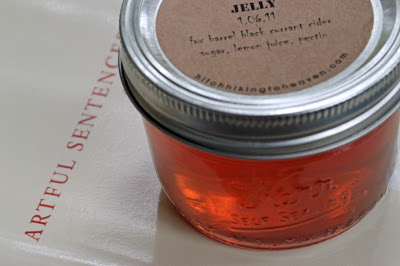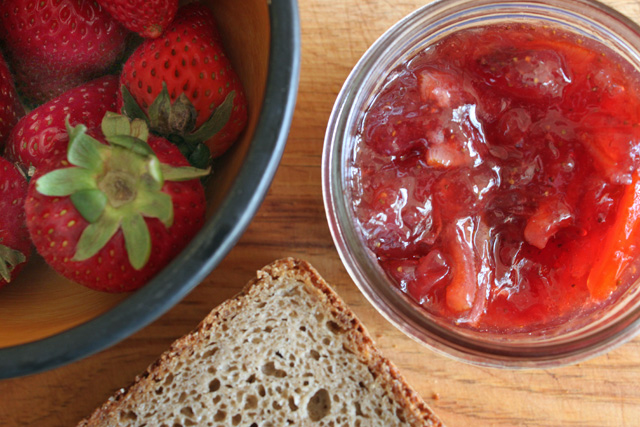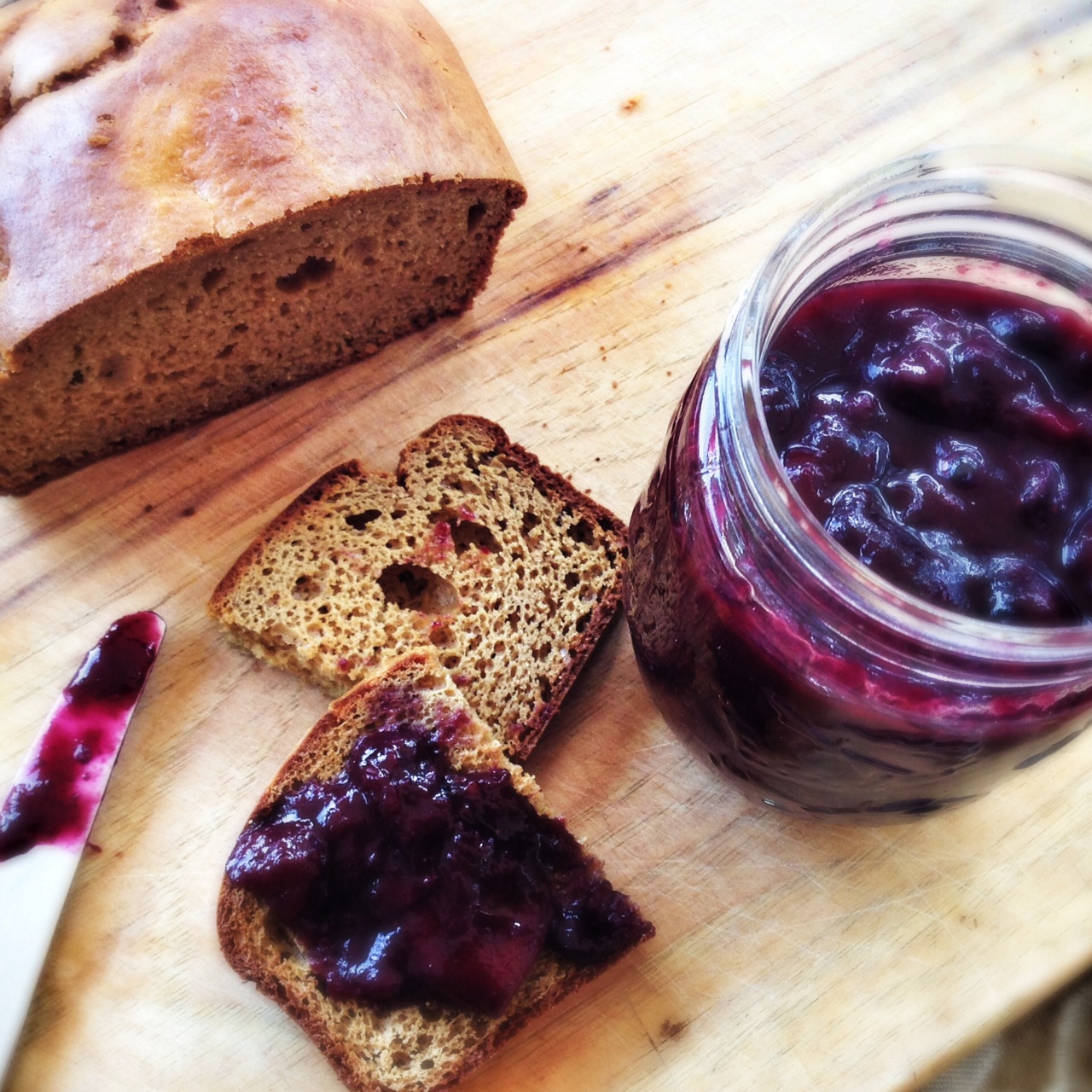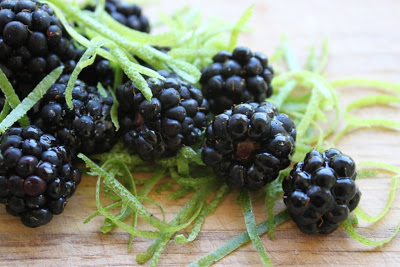I’ve been thinking a lot about jelly. I don’t care for it the same way I do jam or marmalade. I know that marmalade is just jelly with stuff in it, but that’s exactly what I like about it — the stuff. Same with jam. I like the texture-rich, wonderful stuff of it.
I do admire jelly. It can teach you a lot. To be blunt, it can kick your ass. Then it will sit there staring at you in a beautiful, vacant way. Maybe it’ll treat you to a little wiggle, if you were fortunate enough to get a good set. Or, maybe, just maybe — if you are both lucky and tremendously skilled — it will reward you with something truly passion worthy. (For a good example, feast your eyes onJulia’s Paradise Jelly.) If you are like me, however, you’ll make a jelly three times to get it right, step back, and ask, “Why exactly did I do that?”
Well, this time it was Andrea’s fault . . .
Last month, Andrea at Putting up with the Turnbulls took on Spiced Beer Jelly with so much enthusiasm and determination that I couldn’t resist going there — or somewhere like there — myself. I saw this Fox Barrel Black Currant Cider and was crazy to know whether I could use it to make jelly. This is great hard cider, brewed here in California by folks who won a Gold Medal at the California State Fair. I tasted several different varieties and chose this one for its dry, slightly tart taste and beautiful tawny color. Then I proceeded to waste several bottles making bad jelly.
My first sad attempt was based on the Spiced Beer Jelly recipe in Mes Confitures, subbing hard cider for beer and making a few changes to the spices. I used only apples for pectin, nothing from a box. While I’m all for making preserves without boxed pectin, it requires a longer cooking time to achieve a set. In this case, the long cooking time completely boiled away the delicate fermented flavor of the hard cider. The resulting jelly tasted like a Jolly Rancher candy — sticky sweet, nothing subtle about it. Not at all what I had in mind.
 |
| The first attempt was pretty — but where’d the hard stuff go? |
I decided to do it the easy way: Open low-sugar pectin box. Mix pectin with sugar. Pour into cider. That resulted in a much better flavor — true hard cider taste, much less sweet — and a predictable set. (They don’t call it Sure-Jell for nothin.) I used the boxed pectin a couple of different ways to determine the process I liked best, and that’s what you’ll find below. It’s pretty much true to the method called for in the Sure-Jell package insert.
I’ll continue to make most of my preserves without added pectin, but there are times when it makes good sense to reach for the box. Hard cider is clearly one of them, and I would guess that champagne is another. Last month, I wondered aloud whether I could make my Pomegranate Champagne Jelly with only apples instead of packaged pectin, and now I believe I have the answer. If I want to keep playing around with beverage-flavored jellies that have a naturally low pectin content, the box is the bomb.
It may not be my favorite kind o’ chunky preserve, but on a little cracker with some soft cheese from the Cowgirl Creamery? Not bad at all.
Hard Apple Cider Jelly
4 1/2 cups hard apple cider
strained juice of 1 lemon
3 cups sugar
1 package Sure-Jell Low-Sugar pectin
1. Sterilize your jars and prepare your lids.
2. Measure the hard cider into a 6- or 8-quart nonreactive saucepot. Add the lemon juice.
3. Measure the sugar into a separate bowl.
4. Thoroughly mix 1/4 cup of the measured sugar with the pectin in another small bowl. Make sure this pectin-sugar mixture stays nice and dry. Set aside.
5. Bring the cider and lemon juice to a boil over high heat, then stir in the pectin-sugar mixture. Bring the resulting mixture back to a hard rolling boil — that is, a boil that doesn’t settle down when you stir it. During this phase, stir constantly and use the back of your spoon to smash up and disperse the pectin lumps that form when you add the pectin mix to the cider.
6. Quickly stir in the remaining sugar and bring the mixture back to a hard boil. Boil for exactly 1 minute. Again, stir constantly and use your spoon to break up any remaining pectin lumps.
7. Remove from heat and skim any foam. (The pectin should be well dissolved by now, but if you see any small lumps, you can quickly pour the very hot jelly through a strainer. ) Ladle or pour the jelly into your sterilized jars, leaving 1/4-inch head space. Wipe the jar rims with a clean, damp cloth if necessary and secure your two-piece lids.
8. Process in a water-bath canner, using the correct time for your altitude: 5 minutes for 0-1,000 feet above sea level, plus 1 minute for every additional 1,000 feet.
Yields 5 – 6 half-pint jars.*
*Don’t double up! Remember, if you want more jelly than a recipe yields, plan to make multiple small batches. As with most jam and jelly recipes, doubling the batch size will mess with your set.








